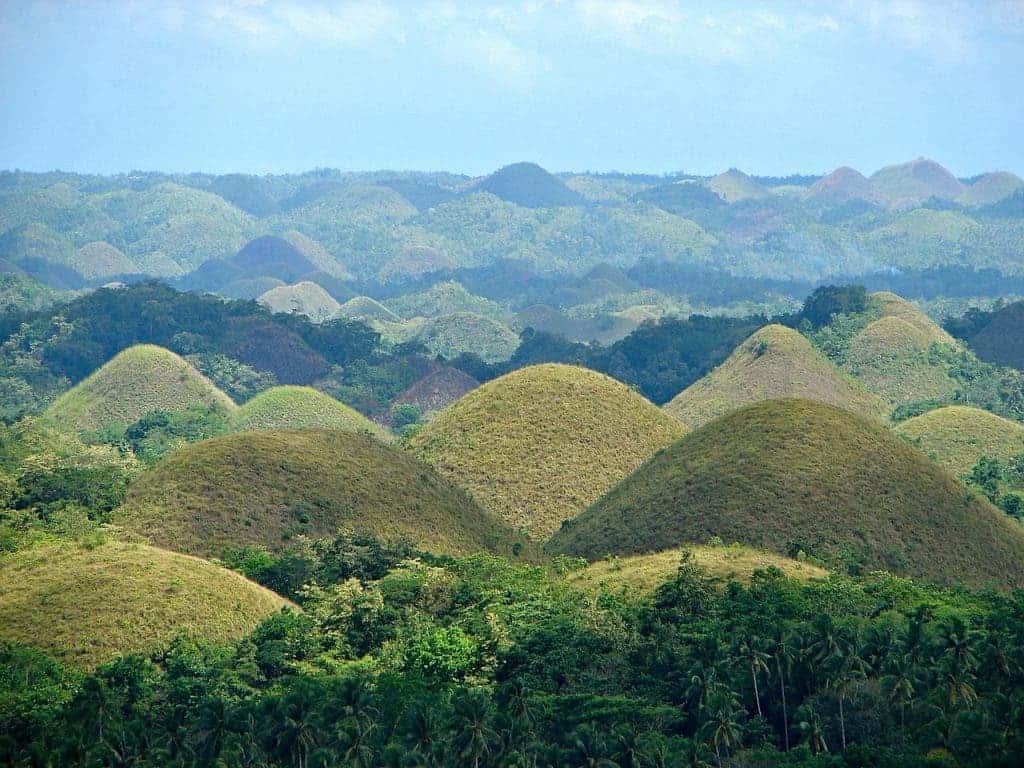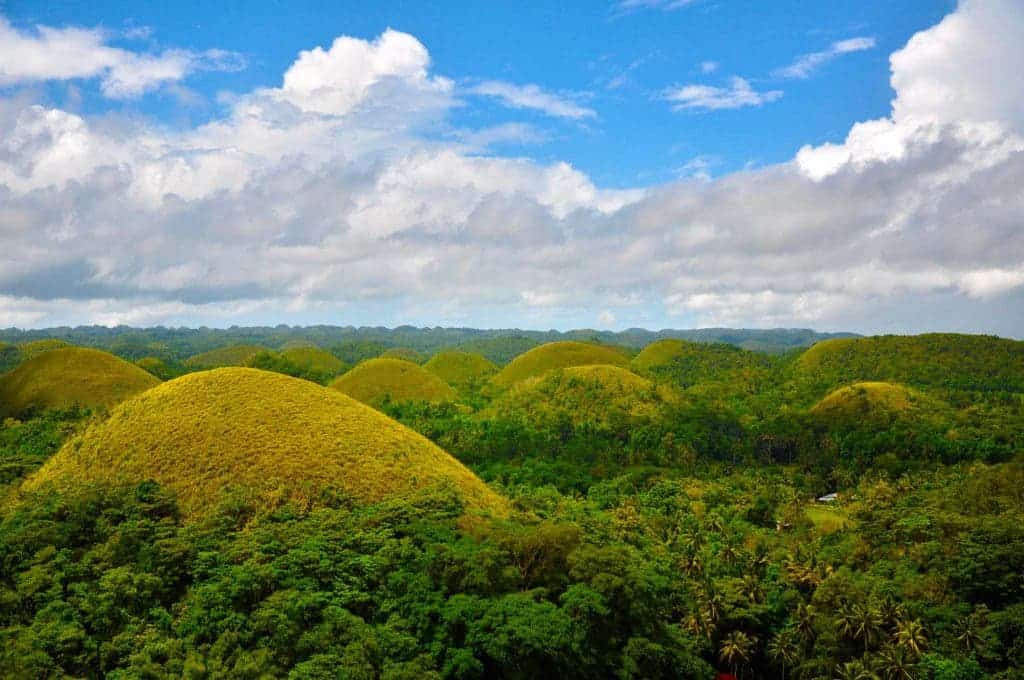
These brownish hills are actually limestone mounds in Bohol province in the Philippines. They are normally covered by grass, but turn a deep-brown colour during the dry season, looking more and more chocolatey. There are about 1,500 mounds in the Philippines; similar karst mounts exist in Croatia and Slovenia, northern Puerto Rico, and Pinar del Río Province, Cuba – but they’re not covered by the same vegetation, and therefore, they’re not chocolate hills.
The conical hills are geomorphological features are called cockpit karst. They were created by a combination of the dissolution of limestone by water (rainfall, surface water and ground water) and their subaerial erosion by rivers and streams after they were uplifted tectonically. They are seperated by well developed flat plains and contain numerous caves and springs.

There are also some more mythological explanations about how the hills formed; one of them tells the story of two feuding giants who hurled rocks, boulders, and sand at each other. The fighting lasted for days, and exhausted the two giants. In their exhaustion, they forgot about their feud and became friends, but when they left they forgot to clean up the mess they had made during their battle, hence the Chocolate Hills.






